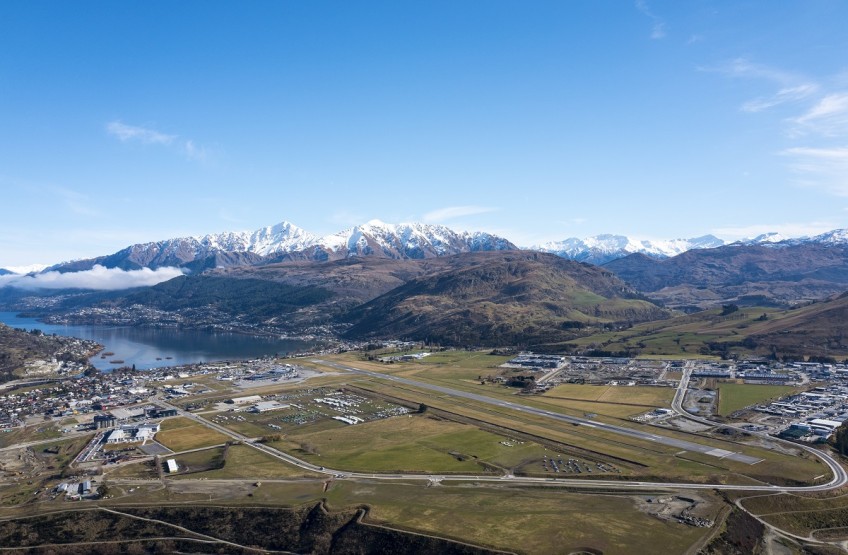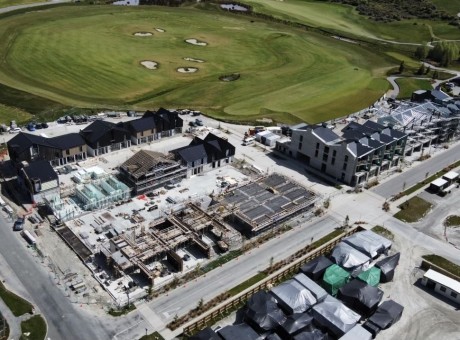Climate change effects linked to Q'town airport location

Opinion. The following piece has been submitted and written by Queenstown resident John Hilhorst - a former Wakatipu High School economics teacher who has lived in Queenstown since 1995. He argues that the impact of Queenstown airport on our climate is inextricably linked to the airport's location.
Monique Kelly of ONE New Zealand presented a stark and fair challenge with her article “The true cost of aviation” (Crux and The Wanaka Sun, 9/5/2019), but not all her conclusions stack up.
We agree that climate change is a growing and imminent “existential threat”, and that the community should challenge the “inevitability” of Queenstown Airport Corporation’s (QAC) forecast increase from 2.2 million to 7.1 million passenger movements by 2045.
We do not, however, agree with her conclusion that the idea to relocate Queenstown Airport is a “distracting diversion” that will “come at an exorbitant environmental, social and economic cost.”

John Hilhorst - a former Wakatipu High School economics teacher who has lived in Queenstown since 1995.
Our research indicates the opposite - that relocating the airport would have a significant positive effect on each and all of these sectors. Choosing not to move the airport would perpetuate exactly the wrong systemic forces that exacerbate climate change and diminish the effect of our interventions, while raising their costs. In contrast, relocating the airport is perhaps the single most useful action this region could take in its effort to address climate change.
The FlightPlan2050 proposal was a direct response by two local urban planners/architects to a Sustainable Futures workshop in Frankton. Participants aspired to develop a livable, peaceful and connected community, but the airport obstinately blocks this outcome.
Inspired by this community goal, a deeper investigation of the impacts of relocating the airport has shown significant positive effects across almost all sectors. It would be better for Frankton, the Wakatipu, Wanaka, and the region. Better for the community, tourism, local transport, the environment, and global climate change. Better financially for housing affordability, for ratepayers, for the airlines and for QAC.
So how come it’s not obvious to everyone? Partly because change to the status quo seldom is. And because unraveling the financial and other costs and benefits of an option not favoured by QAC is not easy.
Concerns regarding road transport emissions miss Queenstown Airport’s changed role from destination to regional hub. QAC’s data shows 51% of passengers landing at Queenstown head to Wanaka and other Central destinations, so no change if directions are reversed.
But what could change with a relocated airport is the efficiency and safety of their travel. Currently most travel with just 1-3 people per vehicle. If the airport were in Central, most who are destined to Queenstown would likely use airport express buses, resulting in fewer vehicles and less emissions. Investment in an electric bus fleet would reduce emissions more quickly than relying on progressive electrification of private vehicles.
Relocation would also allow a quicker and more sure reduction in aircraft emissions. More direct flight lines from Auckland Wellington and Christchurch would reduce current domestic flight times by 6 minutes with a similar reduction likely for international flights. There’s strong potential to reduce weather delays that leave aircraft circling or force them to divert to other airports, reducing their costs and emissions. And, if built to accommodate wide-bodied jets with 302 seats instead of the maximum 186 capacity of narrow-bodied jets, it could reduce by 30% the number of daily flights, significantly reducing emissions.
The financial case is also compelling. Unlocking the $1.2 - $1.6 billion value of the Airport’s 137ha in Frankton provides cash for the development of a new airport. A similar block of Otago dairy land - the most expensive - would be just $6 million at today’s prices. Even with $20 million legal costs as suggested by Wellington International Airport Chair Tim Brown, the total land cost for a new airport could be less than $30 million. That’s a much more sensible approach than QAC’s Master Plan proposals to purchase an additional 15.3ha (for option 1) and another 16-18ha (for options 2&3) of expensive Frankton land, plus 40 houses that would be rendered uninhabitable. None of which will provide actual useful facilities or infrastructure but will result in additional debt-funded land costing $200 to $360 million on top of the existing $1.2 billion landholding in Frankton.
The “exorbitant” economic cost comes not from moving the airport, but from leaving where it is, whether QAC expands for more flights or not.
With the airport dominating Frankton Flats, it forces all residential development to spread throughout the Wakatipu Basin and to ever more distant options such as Kingston, Gibbston Valley and Cromwell. Special housing areas and suburbs are sprouting everywhere, with none having the commercial, cultural, recreational, or educational mix needed for a cohesive community.
This forces everyone into cars and onto roads to get to school, work, shopping, sport or recreation. It stretches the infrastructure of sewerage, stormwater, electricity and telecommunications, draining scarce community resources. The spread population both increases the resource impact per house in terms of land needed, cars required, roads built, and time wasted in travel, while at the same time reducing the viability of public transport, recycling, and the viability of community, sport and cultural centers. A hotch potch patchwork of housing developments throughout the Wakatipu erodes the landscape, environment and liveability for all.
In contrast, the intensification of Frankton Flats as outlined in the FlightPlan2050 presentation, providing an additional 5,000 dwellings for 12,500 residents, would make it a connected, liveable, peaceful community. Within a one kilometer radius, residents would have a complete range of excellent facilities, from schools and hospital to sports and commerce. As a flat, sunny, substantial and central site, it is our cheapest place to build. It is the most efficient place to locate the sewerage and other infrastructure, with the intensity making it the lowest cost per dwelling of any alternative and using the least construction or operating resources. It would substantially reduce dependency on vehicles and increase the viability of public transport, as well as increasing the use of active options such as cycling, scooters and walking.
The very real issue of climate change and our urgent need to act should be reason to support the relocation of the airport, not cause to attack the idea. Rather than being a “diversion” from the real issues, we think the relocation of the airport offers a key opportunity to address climate change and should be seen as the most significant prospect for this region for many decades.
We encourage you to become informed and engage with this debate. Further information is on our website FlightPlan2050.co.nz


























